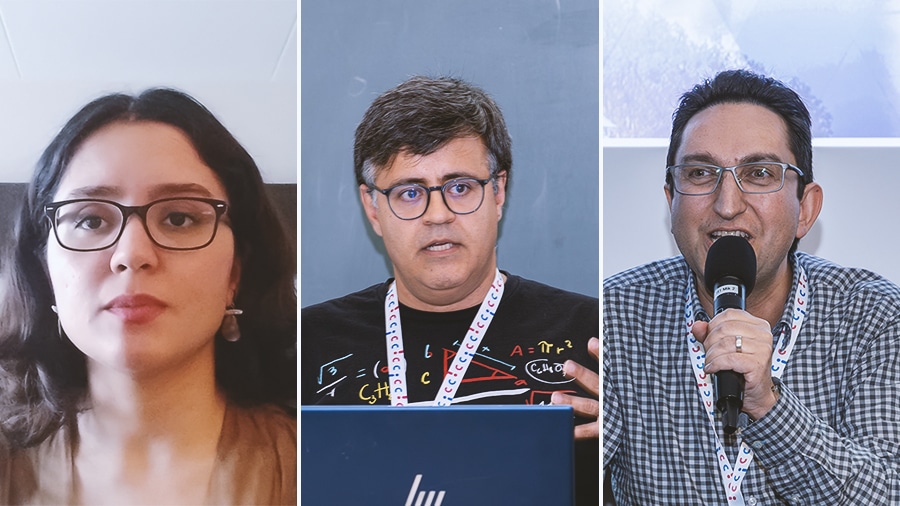Mohammad Hosseini Sohi
Investigating the Role of Muslim Engineers in the Establishment of the Islamic Republic
Reyhaneh Gholami
Rethinking Iranian Student Activism in the 1980s: Beyond State-Centric Narratives
Moderator: Kiaa (Kiarash) Aalipour
Mohammad Hosseini Sohi discusses how the Islamic Republic is described as a political theology that selectively adopts instrumental rationality from modernity while perceiving its own Islamic framework as inherently complete. For this system, the perceived deficiency lies in technical capabilities, particularly advanced weaponry and nuclear arms.
Engineers, especially those who are devout Muslims, are seen as pivotal in utilizing technology to establish and reinforce a Shiite Islamic empire. This research investigates the theoretical foundations and organizational efforts of Muslim engineers during the reign of Mohammad Reza Shah Pahlavi (1941–1979), exploring how they became instrumental in shaping the Islamic Republic.
The theoretical framework of these engineers is rooted in three major influences:
- Traditional Shiite perspectives on governance, as exemplified by Ayatollah Khomeini’s Kashf al-Asrar (1943) and his Velayat-e Faqih lectures (1969).
- Third-worldist critique of modernity, represented by Jalal Al-e Ahmad’s Gharbzadegi (1962).
- An ideological reinterpretation of Shiite theology, as advocated by Ali Shariati, who emphasized a return to authentic Islamic values combined with revolutionary thought.
Organizationally, the efforts of these Muslim engineers included:
- Establishing Islamic associations in universities during the early 1940s, spearheaded by figures like Mehdi Bazargan and Yadollah Sahabi.
- Founding the Iran Freedom Movement (1961), which blended political activism with Islamic principles.
- The creation of the People’s Mojahedin Organization of Iran (1965), which aimed to overthrow the monarchy through armed struggle. However, the ideological shift within the Mojahedin towards Marxism in 1975 led to disillusionment among many Muslim engineering students.
This disillusionment redirected them toward a traditional Islamic framework inspired by Khomeini and Shariati, eventually culminating in the establishment of the Mojahedin of the Islamic Revolution Organization and later, the Islamic Revolutionary Guard Corps. These organizations became central to the governance and ideological enforcement of the Islamic Republic.
Reyhaneh Gholami reflects on the Islamic Revolution of 1979 and the subsequent Cultural Revolution in 1980 marking a period of profound upheaval in Iran’s universities. The government’s efforts to consolidate power led to widespread repression, the closure of universities for over two years, and the dismissal of dissenting students and faculty.
The state established official organizations to suppress student activism, effectively portraying the decade as one dominated by state control. However, this research challenges the prevailing state-centric narrative, arguing that Iranian students in the 1980s engaged in significant acts of resistance against the authoritarian Islamist regime.
Through extensive interviews, this study highlights the diverse forms of everyday resistance among students. Far from being passive victims of state repression, these students demonstrated agency and resilience, employing various tactics to challenge the regime’s authority within academic spaces.
The findings underscore the complexity of student activism during this period, revealing that even under oppressive conditions, students found ways to subvert and resist.
This research critiques the dominant portrayal of the regime’s total success in quelling dissent, presenting a more nuanced account of student resistance. It explores how students navigated and contested theocratic rule, often through subtle but impactful forms of defiance.
These acts not only disrupted the government’s narrative of complete control but also highlighted the enduring commitment of student movements to challenge authoritarianism throughout the decade.



